Eliminating rust before painting
The Video Course teaches you everything about modern cars.
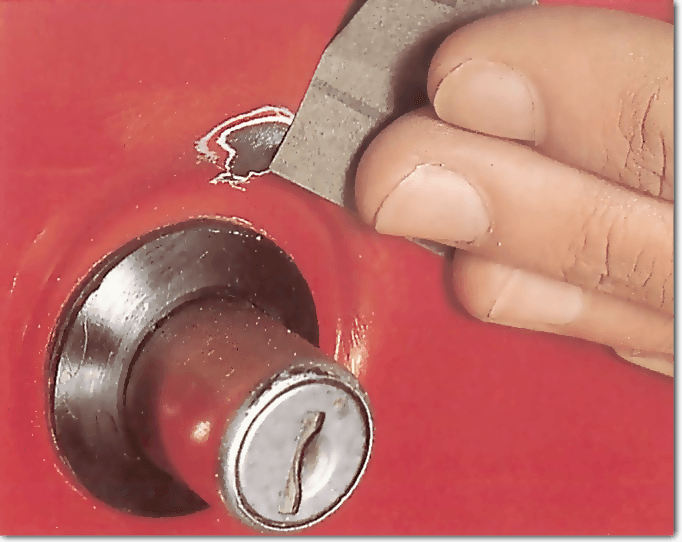
Steel exposed to damp air begins to rust in minutes. If there is any rust on it when it is painted, the rust will spread under the paint.
Car makers treat their body shells before painting by spraying them with a form of phosphoric acid, which is then thoroughly rinsed off.
Most rust preventatives on sale have an acid base. There are two types: rust-removing fluids and rust-resistant primer paints.
The acid used is usually phosphoric, but hydrochloric or tannic may also be used.
You apply the fluid, leave it to act for a certain time, wipe it off, then rinse carefully with clean water and dry thoroughly before priming and painting the treated area.
Some removers are in jelly form so that they do not drip on to sound paintwork, which would be damaged by the corrosive action of the acid.
If you do spill such a fluid on paint- work - or on anything else, including your skin - wash it off at once with plenty of water.
Rust-resistant primers have a less drastic action. The makers recommend that you remove most loose rust before using them. You apply the primer and allow a specified time for it to take effect.
Some kinds do not dry fully when applied to a non-rusty surface - you wipe off the excess and, if any bare metal is exposed, apply a normal primer.
Treating severe rusting
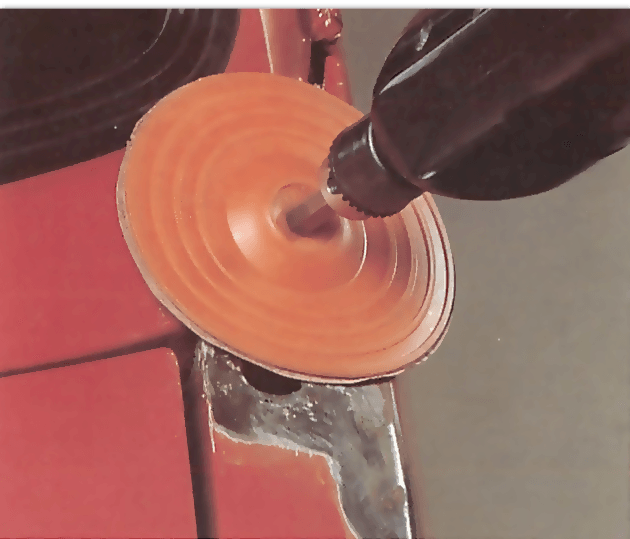
Treat deep or widespread rust with an acid rust-removing fluid. Read the maker's instructions before using it.
Clean off loose rust or paint with a wire brush or coarse emery cloth, or use an electric drill fitted with a sanding disc or flap wheel.
Wear protective goggles to guard your eyes against flying grit and dust. Wipe away grease and wax with a cloth moistened with white spirit.
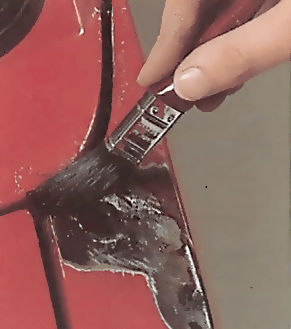
If there is any risk of rust-removing fluid dripping on to sound paint or other parts, cover these with plastic sheet.
Wear rubber gloves and work in a well-ventilated place.
Pour a little fluid into a glass or plastic jar. Apply it only to the rust area, with an old paintbrush. After a few minutes, work it into the metal with wire wool or a small wire brush. Leave it on for the recommended time, and wash it off with water or methylated spirit or wipe it away with a clean cloth, as instructed by the manufacturer
When the area is completely dry, apply primer paint and, if necessary, cellulose stopper to level the surface, as with smaller rust patches.
Treating small rust patches

Small shallow rust patches such as those caused by flying stones can be treated with rust-resistant primer.
Wipe the area and about an inch all round it with a cloth moistened with white spirit, to remove any way.
Scrape away all the loose paint and rub down the rusty area with a scrap of course wet-and-dry abrasive paper, used dry.
Rub down until you reach sound paint all round, but not beyond. Wipe away dust with a clean cloth.
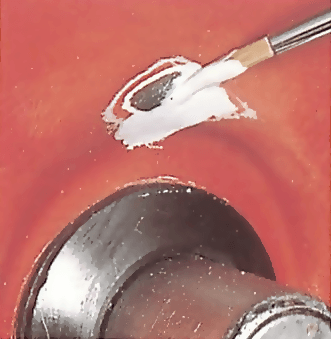
Brush on the primer, overlapping the sound paint by about 6mm all round. Let it dry.
If it is the type that does not dry on non-rusty areas, wipe off the surplus with a clean cloth moistened with methylated spirit.
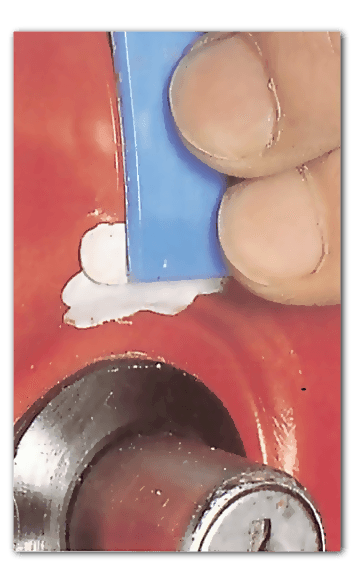
Bring the damaged area up to the level of the surrounding paint by smoothing on a thin layer of bare-metal cellulose stopper, using a flexible knife. Use a grey stopper for light paint, red for dark. Let it dry completely.
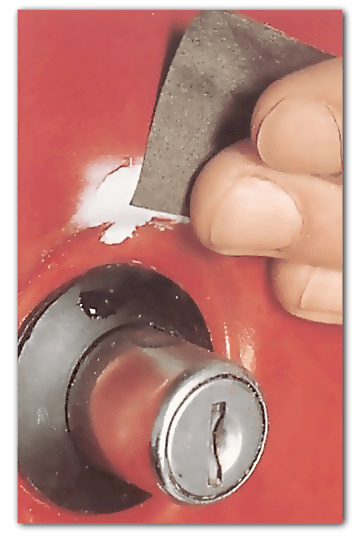
Smooth the stopper with 400-grit wet-and-dry paper dipped in water so that it blends into the surrounding paint. When working on broad, flat areas, wrap the paper around a sanding block.
The Ultimate Car Mechanics video course
Learn everything about modern cars from our new video series.
Learn more >-
We build a Mazda MX5 Miata from scratch
We start by tearing down and then rebuilding the whole car.
-
Every part explained
There's ridiculous detail on every part. Clearly and easily explained.
-
All modeled in 3D
We've created the most detailed 3D model ever produced so we can show you everything working.






